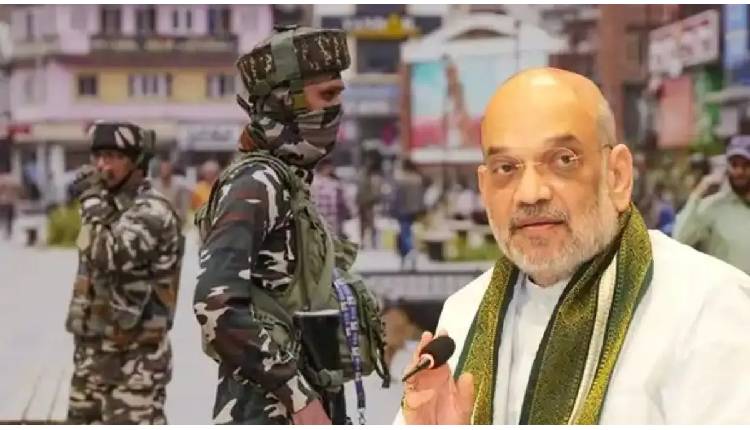New Delhi: After increasing tensions with Pakistan, the Ministry of Home Affairs of India issued a direction on 9 May 2025 and directed that all the states and Union Territories may impose emergency powers under the Civil Defence Rules, 1968. This decision is intended to strengthen local administrations’ capacity to protect civilians and infrastructure from foreign attacks. The development comes at a time of increasing acts of aggression from Pakistan, such as drone and missile strikes as well as ceasefire violations in LoC passages. This is in a bid to compel India to scale up its defensive front.
Context of the Directive
This came in the wake of Pakistan-inspired hostile actions and measures after a few weeks of Indian Operation Sindoor on May 6–7, 2025, against terrorist infrastructure in Pakistan and Pakistan-Occupied Kashmir. This was followed by a series of drone and missile strikes from Pakistan, hitting the Indian cities of Srinagar, Pathankot, Amritsar, and Jammu on May 8. While the Integrated Counter-UAS Grid and S-400 ‘Sudarshan Chakra’ air defence systems neutralised most threats, Pakistan repeated its previous ceasefire violation attempts. It used mortars and heavy artillery in sectors including Kupwara, Baramulla, Uri, Poonch, Mendhar, and Rajouri along the LoC. The attacks have left at least 16 civilians dead, including women and children.
In this context, the notification from the Ministry also states that states and Union Territories may exercise provisionss under Section 11 of the Civil Defence Rules, 1968, which allows directors of civil defence to suspend normal well-laid-down proceduress for emergency procurement and the protective nature of measures against imminent threats.
A Primer on Civil Defence Rules, 1968
The Civil Defence Rules, 1968, framed under the Civil Defence Act, enable India to protect its civilian population and infrastructure from hostile attacks through the sea, air, land, or other means. Under these rules, both central and state governments possess wide-ranging powers to take preventive, protective, and control measures before, during, and after such incidents. This is to ensure a timely and effective response to external aggression to mitigate risks to public safety and critical assets.
Key provisions of the Rules
The Civil Defence Rules state that emergency measures can be imposed by states and Union Territories.
Light Control Measures
Squeeze them in tight to make it difficult to spot from the air or at night during an attack.
Street and home lighting may be restricted or regulated by governments.
Lights may be covered or obscured on vehicles.
Vehicle light signals could be manipulated to turn on and off for greater immunity.
Lighting on some streets can restrict traffic.
The military will also prohibit activities that emit smoke, flames, sparks, or noise to prevent detection by enemy forces.
Fire prevention and control
To reduce the risk of fire:
Landowners could also be directed to set up fire safety equipment, like extinguishers, and separate combustible materials.
Authorities may inspect premises to check compliance, and non-compliant owners will need to reimburse the government for costs.
In the event of a fire, firefighters can enter your property, demolish your buildings or take other measures to ensure it does not spread further.
Building camouflage
To prevent enemies from identifying you:
Authorities may instruct building owners to conceal their buildings, such as by painting their roofs or using nets.
If they fail to comply, the authorities can take this action at the owner’s expense.
Regulations on Hazardous Substances
Goods in the form of toxic, flammable, or explosive substances are discussed separately to minimise risk.
Governments can otherwise control or regulate the retention of such material quantities or impose safety measures.
Regular checks guarantee that safety measures are being implemented.
Air Raid Shelters
For shielding residents from air attacks:
Governments of states can order bomb shelter building in high-risk regions, including design, materials, and deadlines.
Inspections confirm that construction was done properly and nothing was overlooked.
Fire and Emergency Services
In the event of fires or explosions in the vicinity of major ports, cities, or towns:
This allows them to requisition fire and water supply services owned by local authorities or private owners.
Personnel and equipment will be subject to government orders in extreme situations.
Civil defence drills
To ensure preparedness,
Authorities of both the state and central government can also intervene and permit mock drills and exercises in any region.
According to the notification, during drills, civil defence personnel can enter any land, draw on or otherwise use any available water source, construct temporary structures, and impose restrictions on roads or services.
The government will compensate for any property damage or injuries sustained during these exercises.
Need for Emergency Powers: A Strategic Rationale
This activation of such powers shows India is in a high state of alertness along its western borders. Pakistan took detectable aggressive action using 300–400 Turkish-made Asisguard Songar drones on May 8–9, 2025, to probe Indian air defences and attack visible civilian and military sites. These felt even, and the ensuing ceasefire violations along both sides of the LoC soon after led to such significant instability that it required strong civilian defence measures.
The central government gave states and Union Territories the option to utilise the Civil Defence Rules to increase local self-reliance in facing possible attacks. These rules allow for the quick deployment of resources, enforcement of safety protocols and coordination of emergency services. This ensures communities are ready if the situation escalates.



Comments are closed.